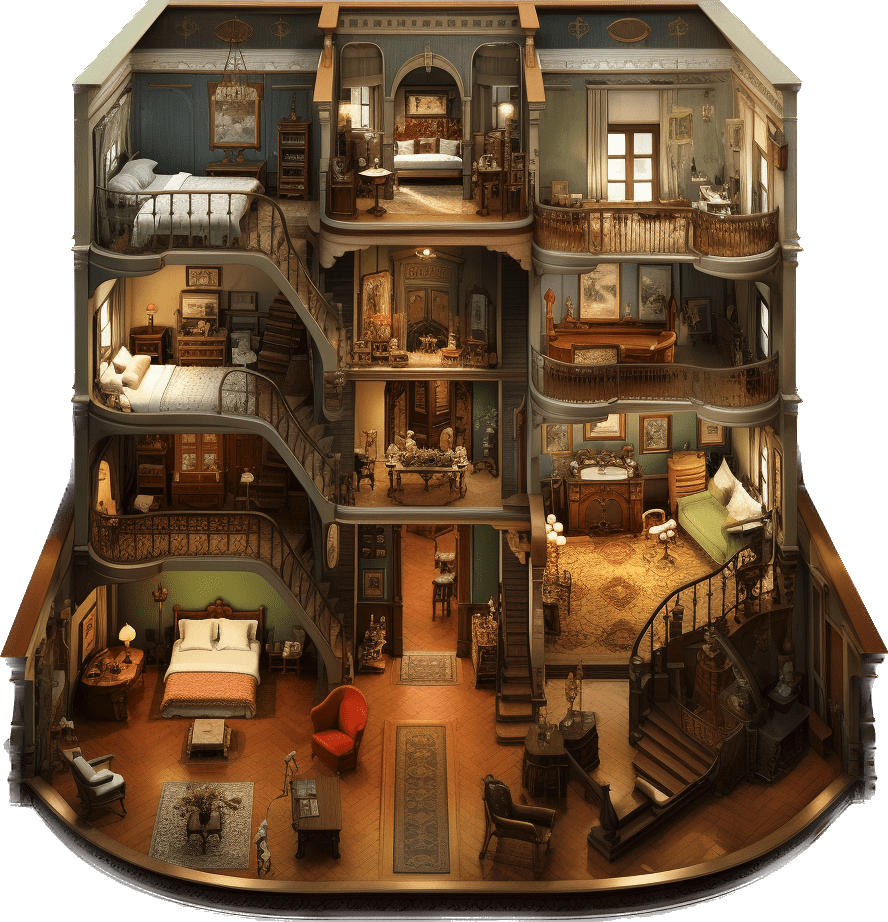



Step back to the Victorian era (1837-1901) and you’ll find homes where no detail was overlooked, no space went unused. Form and function worked in harmony thanks to meticulous room planning and purpose. Secret passages allowed discrete servant movement while lavish finishes dazzled guests.
The formal parlor hosted company amongst fine rosewood furnishings upholstered in silks, all to impress. Concealed ceramic stoves warmed the space without detracting from the décor. Libraries nurtured intellectual pursuits with leather chairs and built-in bookcases soaring to the ceiling, allowing retreat amidst tomes. Ladies’ sitting rooms promoted feminine hobbies like sewing amongst delicate fabrics and florals. Unexpected mechanical curiosities like sewing birds added novelty. Masculine dens contained plush leather chairs and rich wood paneling for smoking and playing billiards.
The dining room’s elaborate place settings on carved mahogany tables served as the stage for family meals. Food arrived via concealed backstairs from basement kitchens discreetly run by servants. Interior trends like marble busts, ferns and palm fronds further decorated these spaces.
While less common, bathrooms revealed changing attitudes towards hygiene. Early bassinette-like toilets and copper tubs with hand pumped water catered to necessity. By the 1890s, pampering emerged through lounging couches, clawfoot tubs and indoor plumbing.
Wealthy homes also boasted surprising spaces like billiard rooms, palatial conservatories allowing the outdoors in, and grand ballrooms for lavish entertaining where music filled the air. Smoking rooms provided men refuge to light up without judgment or bother.
Winding front staircases welcomed guests while rear ones enabled unseen servant circulation. Top floor nurseries and schoolrooms separated children’s activities from adult affairs. Discreet servant sleeping quarters hid above.
Today, we continue finding inspiration in the Victorian era’s intentional room-by-room design – the specialized functional uses, sunlight streaming through expansive windows, furnishings and décor working together in aesthetic harmony.Though aesthetic styles may change with the times, the core principles established in Victorian interiors continue to influence interior design foundations referenced in homes today.
Stepping into a well-preserved Victorian home feels like time traveling to the past – creatively designed to uplift, inspire and bring families together. More than displays of wealth, these were homes filled with life and connection. As we restore relics from this era, may we do so with the same care, passion, and purpose that our ancestors infused into every detail.

Built & Designed by Fastweb2